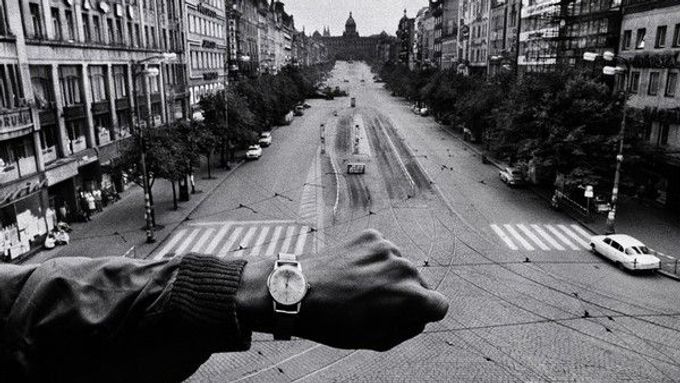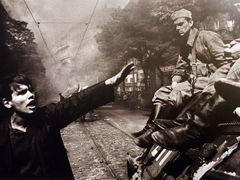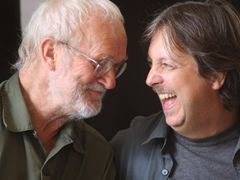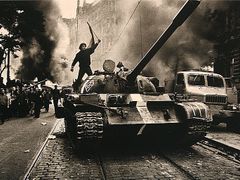Prague - "In those days anything was possible, but everything was also mixed up, it was definitely a tragedy, but at the same time, how many times would I have had the chance to ride down Wenceslas Square on a tank?" Josef Koudelka wryly commented at a press conference to kick off the exhibition Invaze 68 (Invasion 68), which is now being held in the Old Town Hall gallery.
The exhibition, which runs until September 13, is an offshoot of the book of the same title and offers a concentrated view of the first days of the Warsaw Pact invasion.
Koudelka and graphic designer Aleš Najbrt immersed themselves in an archive of contact sheets representing almost 10,000 photos in order to compose a narrative of rising unified protest and its subsequent repression.
Fortunate misfortune
"It was a great misfortune, a tragedy for the entire country, but it was also fortunate for me that I could be there. For the second time in my life, I had experienced something extraordinary. Primarily that everything changed at once, over night. People began to behave to one another decently, thieves declared that they would stop stealing since the police had more important things to do. Everything unbelievable was possible," said Koudelka, recollecting his impressions at the time.
"The first week after the occupation, we behaved exceptionally as a nation. And that hasn't happened many times in our history. I would like my book to be a reminder of that."
Invaze 68, which was published in April by the Torst publishing house, was originally intended only for the Czech market, but has since been issued in nine languages - a significant accomplishment in itself, but something Koudelka would like to take further.
"We would like to publish Invaze in Russia; there are publishers who are interested in it, but they can't come out with it. The political climate in Russia doesn't allow it, which only illustrates the situation," commented the photographer regretfully.
"I have forgiven the soldiers. I was recently in Azerbaijan when someone who had been a soldier at the time told me that they had come to liberate us. Well yes, I said to him, but it was a little different, my friend. There were dead here. He then said that if they were dead then it was only the Russians, because they didn't shoot. I subsequently pulled out a book that was published in France ten years ago, where it can all be seen. And I told him, this is how I saw it. That is the power of photography."
Iconic images of Prague
Although Koudelka approached the collection following a hiatus of forty years, little changed when selecting those central and iconic images of Prague Spring. "We didn't add any more to those primary thirteen photographs, though Aleš created a framework which we adapted the selection. We added micro-stories."
"My work at the Magnum agency had a definite influence on the new selection, which is focused primarily on photos that best capture the given event. The point is that one photo is able to render the entirety of the situation - that is how I learned to see photography."
Ivaze 68 was published in the spring thanks to a friendly publisher in France, whose presentation overlapped with the fortieth anniversary of the Paris uprising. The French daily Le Monde also noticed the connection and singled out Koudelka's book as the best evidence of the tense events that shaped 1968.
"Its tightly knit structure is due to the fact that, in contrast to professional photographers, I didn't need to go to the newsroom to develop the film so that my photographs could be published immediately; I photographed for myself."
Koudelka tries to uphold that credo today. Even at the age of seventy, he is not yet ready to retire. "I am now considering an offer to photograph in Israel. I have already been there on a fourteen-day inspection, but some places haven't let go of me. I have a mind to document that wall of hundreds of kilometers, which separates Israelis from Palestinian settlers."
"Many photographers focus on politics, but I am not a political person, but rather a visual one. For me any wall is, in principle, bad, because it is a breakdown of civilization."
More about 1968:
Czech TV to screen 1968 Soviet invasion live
Soviet invasion of 1968 to have its own web page










